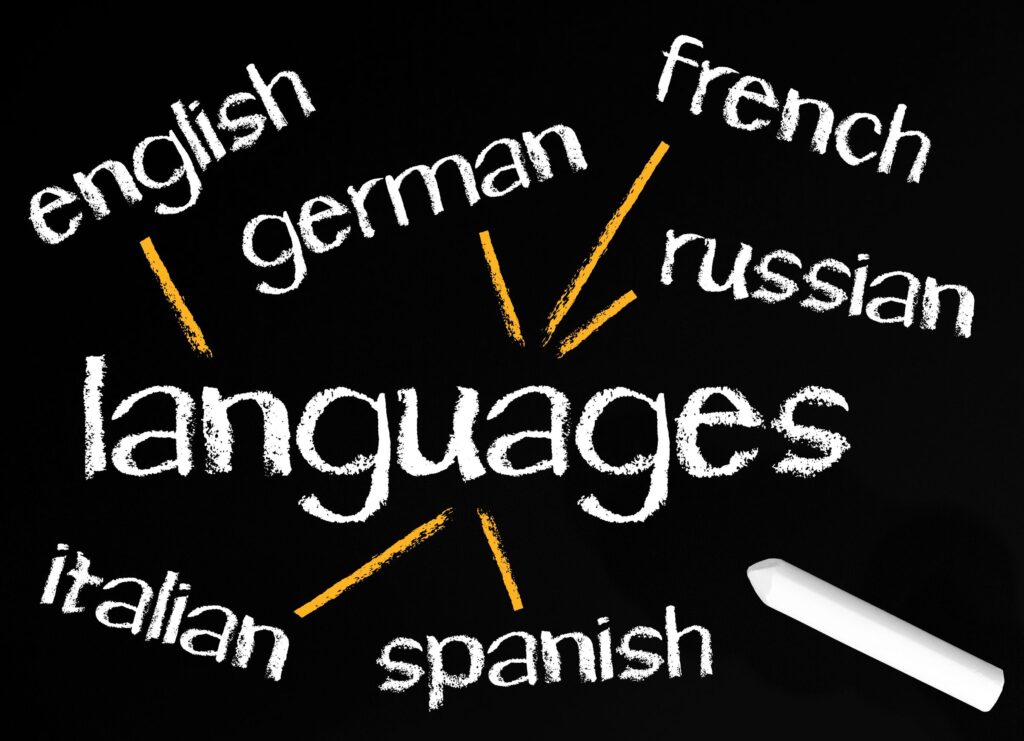Even if a company does not have a global operation, if it maintains a website, it means that people from different parts of the world can access the site and view its content. Although you cannot assume that everyone speaks English, which is actually a fact, people may understand the site’s content or be interested in the company’s product or service.
With more people shopping online due to the necessity of the current health risks, online business owners need to understand the situation quickly, respond to it faster, and cater to the needs of a multilingual market. Using data analytics and marketing experts’ skills, they can use the global situation to serve more customers, develop and sell new and more products, and reach new consumers – by communicating with them in their preferred language.
Top 5 languages used by online businesses
Online businesses must understand that having a multilingual website can ensure their growth and success. Online shopping is gaining worldwide preference because it is convenient, and it is possible to obtain goods from different countries.
An online business’ success depends on the products the company sells and the depth of understanding the consumers get from the information available on the e-commerce site.
As online shopping becomes more popular, the need for diverse language options rises. Business owners should not miss the opportunity to appeal to a wider audience, which they can achieve by having their site available in different languages.
The decision on which languages to translate into will depend on the target market. Business owners should carefully analyze market data and define the common languages spoken by their target audiences. As a business owner, you may find that you should translate your site into two or more languages.
According to the research results from Statista.com, the five most used languages on the Internet as of January 2020 are:
- English: 25.9%
- Chinese: 19.4%
- Spanish: 7.9%
- Arabic: 5.2%
- Malaysian/Indonesian: 4.3%
The bottom five includes Portuguese, French, Japanese, Russian, and German, consecutively.
Although English is still the most dominant language online, it only represents a quarter of the Internet users’ population. This means that there are more languages spoken. To be effective, you have to consider that online shoppers prefer to read and shop from sites that speak their language. Moreover, you have to consider the languages specific to your target markets. Likewise, it is critical to note that more people are monolingual.
Language affects global purchasing behaviors
According to the results of many consumer research and studies, online purchasers tend to spend more time on sites that offer information in their native language, and they are likely to buy from these e-commerce sites. Consumer preferences change; thus, it is vital to study historical consumer data and compare them to the most current data analysis.
Aside from the top languages used online, it would help if you considered the top business languages used today, vis-à-vis businesses in the U.S. It is recommended that U.S. companies prioritize these languages in 2020, after English.
- Represents 19.3% of Internet traffic, it has 1.3 billion native speakers.
- Current Internet traffic is placed at 8.1%, and most of the emerging markets today are from Spanish speaking countries.
- The region where Arabic is spoken is one of the world’s wealthiest, with 5.3% of Internet traffic.
- In the latest Ethnologue data, French is the fifth most spoken language globally, with 277 million native speakers (from France and French-speaking countries in Africa), representing 3.2% of Internet traffic.
- Spoken in Brazil, one of the world’s fastest-growing economies, with 4.1% Internet traffic
But the list changes. Other sources recommend different sets of priority languages to harness about 90% of online business opportunities, with the top five as English, Spanish, French, Italian, and German from other data and research results currently available. Your other choices are Chinese, Korean, Japanese, Swedish, Russian, Arabic, Dutch, and Portuguese.
With these different lists, you’ll see the pattern of which languages make it to the top five choices for online businesses.
Marketing benefits of a multilingual business website
Industry analysts and researchers have various recommendations on how to market your products through a multilingual website effectively.
- Translating your site is more cost-effective than embarking on other marketing campaigns, such as in-store promotions, advertising, and other marketing strategies.
- With a multilingual website, it is easier to increase your sales. According to the latest Common Sense Advisory (CSA) Research, consumer behaviors and preferences are as follows:
- Prefer content in their language (even if the quality is poor): 65%
- Tolerance for websites with mixed languages: 67%
- Product reviews in their language: 73%
- Product information in their own language: 76%
- Will not purchase from a website not written in the local language: 40%
- Keep in mind that not all global consumers are English speakers. You have more chances of reaching consumers from different parts of the world when your site is available in several languages. Since global consumers prefer to shop from online businesses that use their language, translating your site into other languages is a revenue opportunity that you cannot afford to miss.
- With a multilingual website, it is easier for your business to expand to new markets and reach new consumers that you cannot reach through traditional marketing methods, which require more budget and other resources.
- A translated website improves multilingual SEO, as search engines can easily understand your site pages and direct searches to targeted audiences, improving your local search engine rankings, thereby increasing site traffic.
- Having a multilingual business website enhances recognition and trust in your brand. Since more people who speak other languages can access your site, brand awareness increases, associating your company to a particular product. With a localized website, your reputation for being a company that respects local culture and cares for its customers will make a big contribution to brand loyalty.
Countries with the greatest number of online buyers
It is worthwhile to know that e-commerce is growing and will continue to grow. With the current global health crisis, the world is going to see more online businesses. Right now, the world has 7.1 million online retailers. In the United States alone, about 1.8 million companies are engaged in online commerce. E-commerce is an industry that is projected to grow to about $4 trillion by 2025.
Based on the 2017 figures, the countries with the largest e-commerce markets are the following:
- China: $589 billion
- United States: $341.7 billion
- United Kingdom: $176 billion
- Japan: $114.4 billion
- France: $72 billion
- Germany: $66.2 billion
- South Korea: $38.8 billion
- Canada: $37 billion
- Russia: $23 billion
- Brazil: $20 billion (representing total sales in Latin America)
In 2019, the countries projected to be the hottest for e-commerce are the following:
- Brazil: 31 million unique online shoppers, projected to hit online sales of $16.7 billion by the end of the current year
- Canada: 28 million online shoppers, with projected revenue of $33 billion in 2024
- China:One of the biggest markets for online sales, with 800 million Chinese using the Internet, and online sales of more than $670 billion
- Germany:In 2019, its e-commerce revenue is €57.8 billion and is projected to have 70 million e-commerce users by 2023
- Italy:19 million Italians use e-commerce, with a revenue projection of over $18 million in 2020
- Japan:The country will have about 81 million online shoppers by 2021, with current revenue of $100 billion coming mostly from hobbies segments, DIY, and toys.
- Russia:The country is experiencing a surge in its economy, spurring an increase in online sales, projected to increase from 2% of total retail sales to 14% by 2023, with the largest revenues coming from sales of footwear, apparel and second-hand items.
- South Korea:The country is enjoying a boom in online sales, mostly from reservation services and travel arrangements that are a part of the $37 billion online revenues.
- United Kingdom: 93% of Internet users in the UK contributed to its current £106 billion in e-commerce sales, which is expected to reach £140 billion by 2023
- United States:By 2024, retail e-commerce revenue in the U.S. is expected to hit $476.5 billion, with apparel, accessories, food and beverage, beauty, personal care, and health products as key revenue contributors.
There may be shifts in the ranking, but as you can see, the countries in the list remain the same, with one or two emerging markets, helping you to decide which markets to explore and which languages are most suitable for your website translation.
We’ll help you localize your e-commerce site
Optimize your online sales by having your site localized. With a multilingual website, you widen your market and customer reach to improve your bottom line. Marketing today to a global audience requires using all available technologies and bridging the language gap. Here at eTranslation Services, we have an excellent network of native-speaking translators with knowledge and experience in different topics and industry sectors, ensuring that your website will speak to your consumers and your target locale in the language they prefer. Let’s discuss your site localization or translation requirements. Kindly contact us via email at [email protected] or call us at (800) 882-6058 at your convenience.



